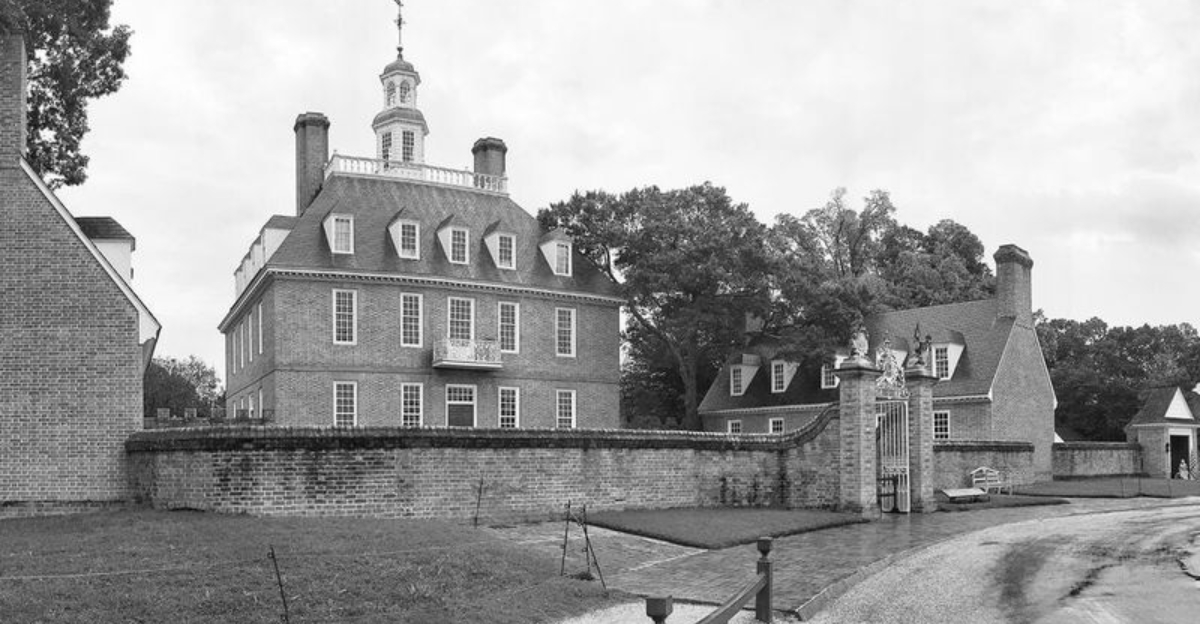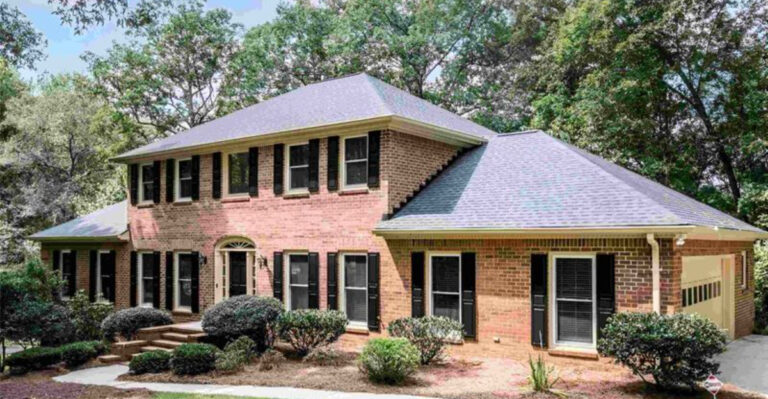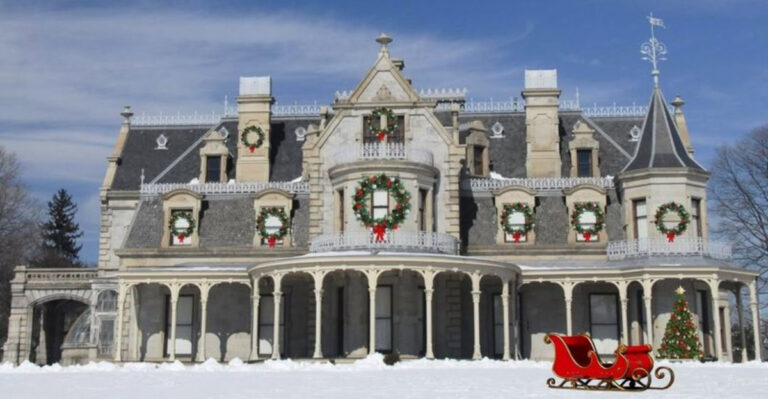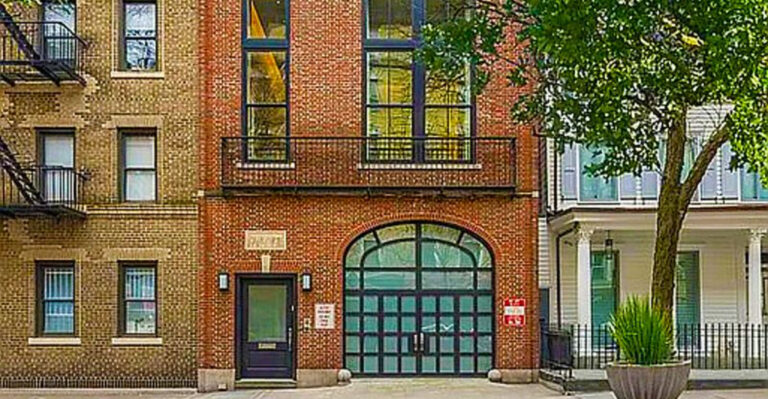12 Majestic Ancestral Homes Forever Lost to Time (Plus 5 Even Better Looking Ones That Are Still Here)
America’s grand mansions have always fascinated me, the stories of wealth, power, and dreams they hold are like stepping back into a different era. Sadly, many of these incredible homes have disappeared over time, lost to fire, demolition, or neglect.
But the ones that remain still stand as breathtaking testaments to our architectural heritage, continuing to wow visitors today.
I invite you to join me on a journey through these remarkable tales of loss and survival, where history and beauty intertwine, reminding us of what once was and what we’re lucky to still have.
1. The Original Pennsbury Manor, Pennsylvania (Rebuilt, Original Lost)
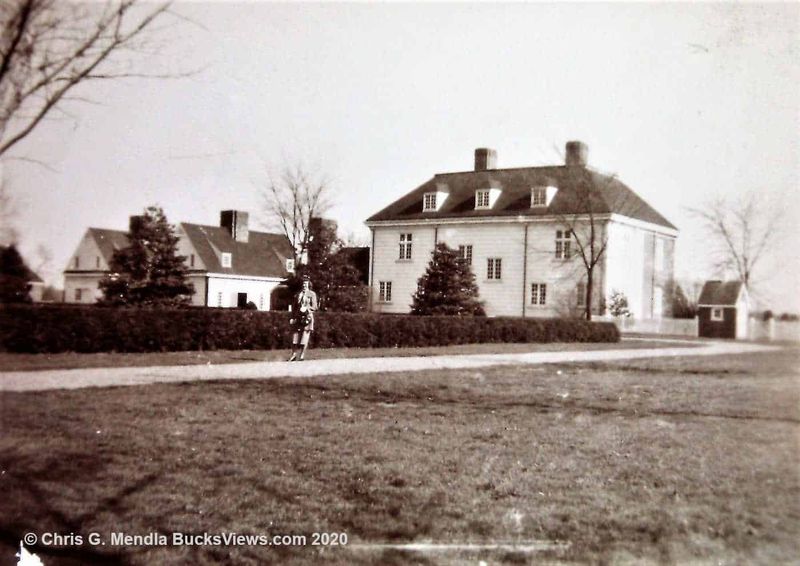
William Penn’s beloved country estate once stood as a testament to colonial grandeur along the Delaware River. Built in the 1680s, this magnificent home featured elaborate gardens and riverside terraces that impressed visitors from across the Atlantic.
Fire claimed the original structure, leaving only memories and archaeological traces. Though a faithful reconstruction now occupies the site, the authentic timber and craftsmanship of Penn’s actual residence disappeared forever into history’s shadows.
2. Mount Airy, Virginia (Burned In 18th Century)
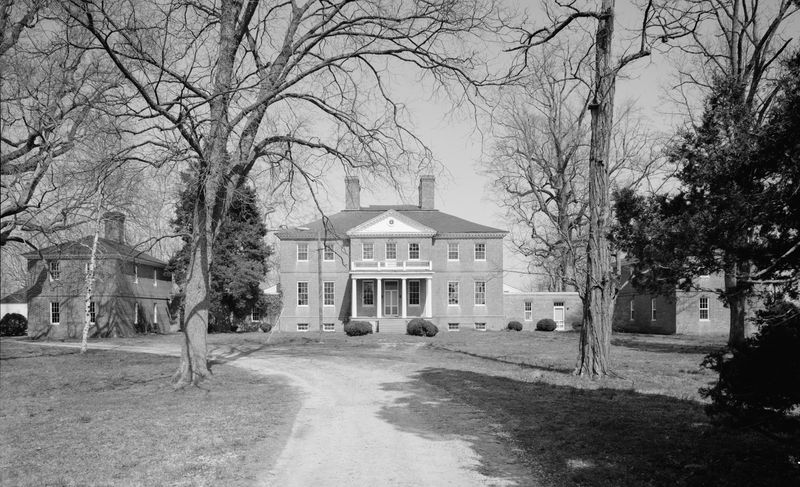
This stunning Georgian plantation house belonged to the powerful Lee family and showcased some of Virginia’s finest colonial architecture.
Mount Airy’s perfectly symmetrical facade and grand entrance hall once welcomed the most influential figures of the Revolutionary era. Flames consumed this architectural masterpiece during the 18th century, reducing centuries of craftsmanship to ash.
Where elegant rooms once hosted political discussions that shaped America, only foundation stones and memories remain today.
3. The White House’s Original 1792 Wooden Kitchen (Demolished)

Before modern conveniences, the President’s meals came from a separate wooden kitchen building that bustled with activity day and night.
This humble structure fed everyone from George Washington to early 19th century leaders, its massive fireplaces producing countless historic dinners.
Demolition crews removed this culinary cornerstone during White House renovations, erasing a unique piece of presidential daily life. Modern kitchens replaced the charm and character of hand-hewn beams and stone hearths.
4. The Governor’s Palace, Williamsburg, Virginia (Original Burned, Reconstructed)
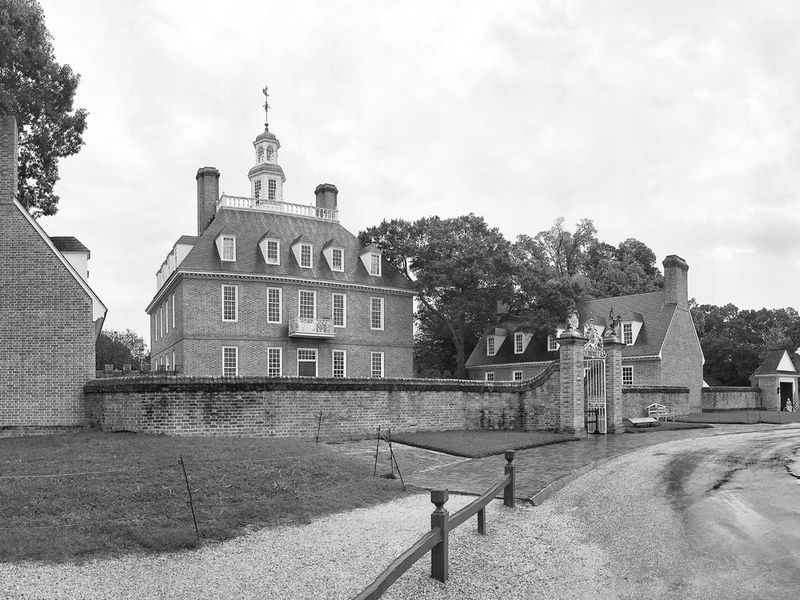
Colonial Virginia’s seat of power commanded respect with its imposing brick facade and elaborate formal gardens. The Governor’s Palace hosted royal representatives and colonial leaders in rooms decorated with the finest furnishings money could buy.
Revolutionary War chaos brought fire to this symbol of British authority, consuming decades of imported luxury and craftsmanship.
Though historians rebuilt a faithful replica, the original palace and its authentic royal atmosphere vanished in the flames of American independence.
5. The East India Marine Hall, Salem (Replaced)

Salem’s merchants built this Federal-style repository to house exotic treasures brought back from trading voyages to Asia and beyond. The hall’s unique collections told stories of America’s early global commerce through artifacts that few Americans had ever seen.
Urban development claimed this maritime treasure house, scattering its irreplaceable collections and destroying a building that embodied Salem’s golden age of international trade.
Modern structures replaced the charm and historical significance of this merchant’s showcase, leaving only memories of its exotic wonders.
6. The Samuel P. Colt House, Rhode Island (Demolished)
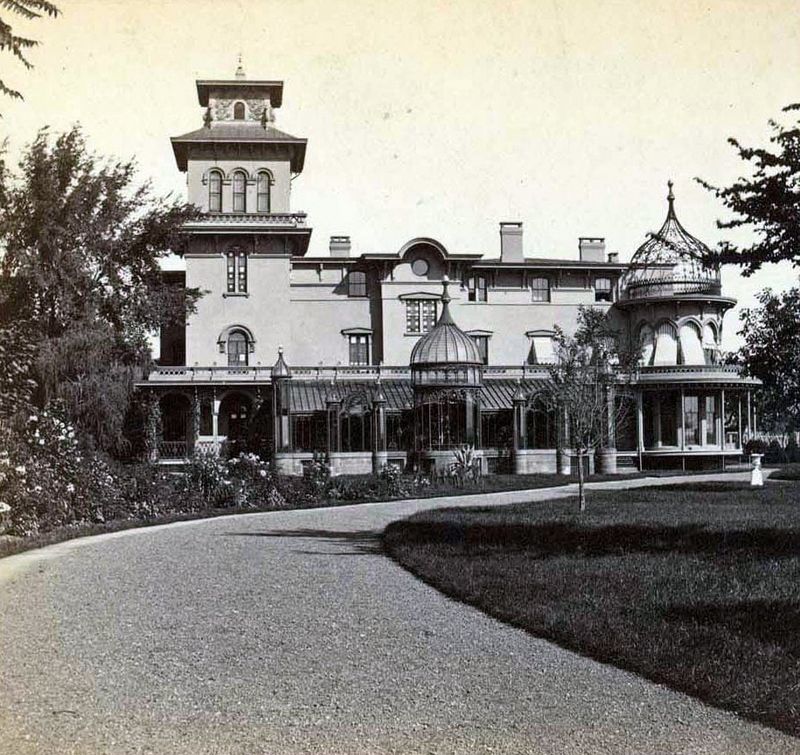
Industrial fortune built this elaborate Victorian showcase that demonstrated how American manufacturing wealth translated into domestic grandeur.
Samuel Colt’s firearms empire funded every luxury detail, from imported marble to custom woodwork that celebrated both success and craftsmanship. Progress demanded the mansion’s removal, sending hand-carved banisters and stained glass windows to the demolition pile.
Rhode Island lost a magnificent example of how 19th century industrialists expressed their prosperity through architectural excess and artistic patronage.
7. The Walton House, Georgia (Destroyed)

Georgia’s plantation elite built homes that projected power and permanence across vast agricultural empires, and the Walton House stood as a prime example of this architectural confidence.
Its massive columns and sprawling floor plan accommodated both family life and business entertaining on a grand scale. Time and neglect accomplished what war had not, reducing this symbol of plantation society to scattered bricks and foundation stones.
Georgia’s landscape lost a significant reminder of its complex antebellum history and architectural heritage.
8. The Original Andrew Carnegie Mansion, New York (Demolished)
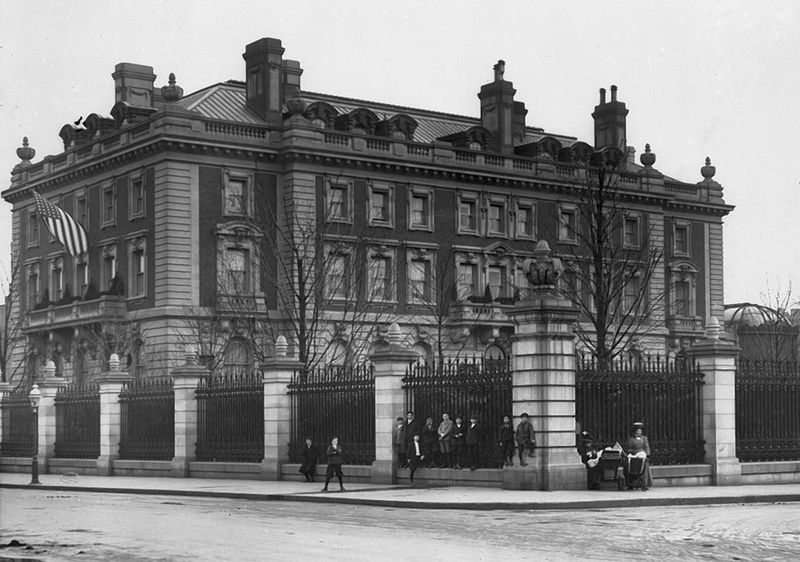
Steel fortune built Andrew Carnegie a palace that rivaled European nobility’s grandest residences, complete with a private concert hall and library that hosted the era’s greatest minds.
This Fifth Avenue showplace demonstrated how American industrial wealth could create cultural institutions within private homes. Manhattan’s relentless development claimed even Carnegie’s fortress, proving that no amount of money could guarantee architectural immortality.
Demolition crews destroyed not just a building but a unique example of how America’s richest citizens once lived and entertained.
9. The Original Vanderbilt House, New York (Demolished)

Railroad money created a domestic monument that shocked even New York’s jaded elite with its sheer scale and luxury. The Vanderbilt fortune funded rooms that required full-time staff just to maintain, each space decorated with treasures that museums would envy.
Economic reality eventually conquered even Vanderbilt grandeur, as maintenance costs and changing lifestyles made such palaces impractical.
Manhattan gained commercial space but lost a tangible reminder of the Gilded Age’s most extravagant domestic architecture and lifestyle.
10. The Original Astor Mansion, New York (Torn Down)
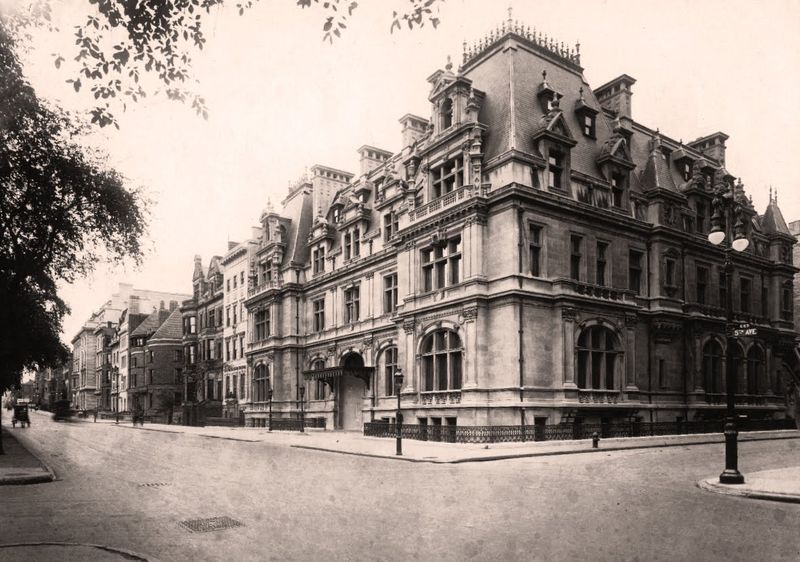
America’s first great fortune built a residence that established the template for New York high society living, where European refinement met American ambition in perfectly appointed rooms.
The Astor name became synonymous with luxury, and their mansion set standards for elite entertaining. Real estate pressure forced even the mighty Astors to abandon their family seat, trading architectural heritage for commercial profit.
New York lost its original palace of American aristocracy, along with the social history contained within its walls and gardens.
11. The Original Hearst Castle (Early Versions Demolished)
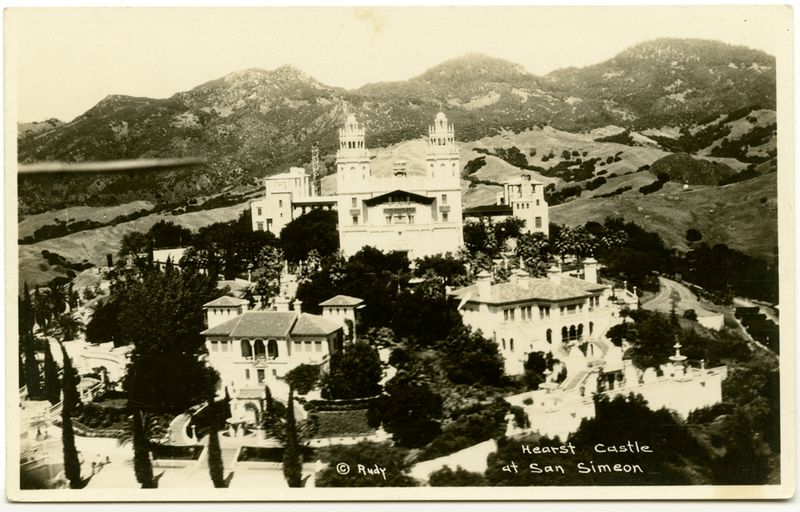
William Randolph Hearst’s media empire funded a California dream that evolved constantly as his wealth and ambitions grew larger. Early versions of his hilltop retreat bore little resemblance to the massive complex that eventually crowned the San Simeon mountains.
Hearst’s perfectionist nature led him to demolish and rebuild sections repeatedly, erasing earlier architectural experiments in favor of ever-grander visions.
Each renovation destroyed unique elements that represented different phases of America’s most famous media mogul’s creative and personal development.
12. The Original McKim, Mead & White Mansions In New York (Many Gone)

America’s premier architectural firm created domestic masterpieces that brought European classical traditions to New York’s wealthiest families, each commission showcasing different aspects of their sophisticated design philosophy.
These mansions represented the pinnacle of American architectural achievement during the nation’s cultural coming-of-age. Urban development consumed most of these irreplaceable works, leaving only photographs to document the firm’s residential genius.
New York lost architectural treasures that demonstrated how American wealth could support world-class design and craftsmanship at the highest levels.
13. Biltmore Estate, North Carolina
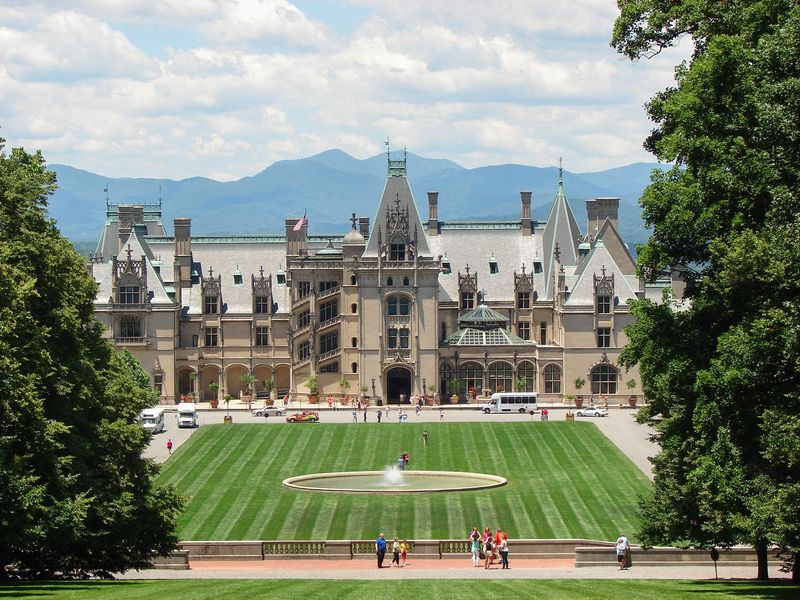
George Washington Vanderbilt’s 250-room château remains America’s largest private residence, a testament to Gilded Age ambition that still takes visitors’ breath away.
Its French Renaissance architecture and priceless art collections create an experience that transports guests to European nobility’s golden age.
Unlike its demolished cousins, Biltmore survived through careful family stewardship and innovative tourism, proving that historic preservation can be both profitable and culturally valuable. Visitors today experience authentic Gilded Age luxury in settings that rival any European palace.
14. Hearst Castle, California
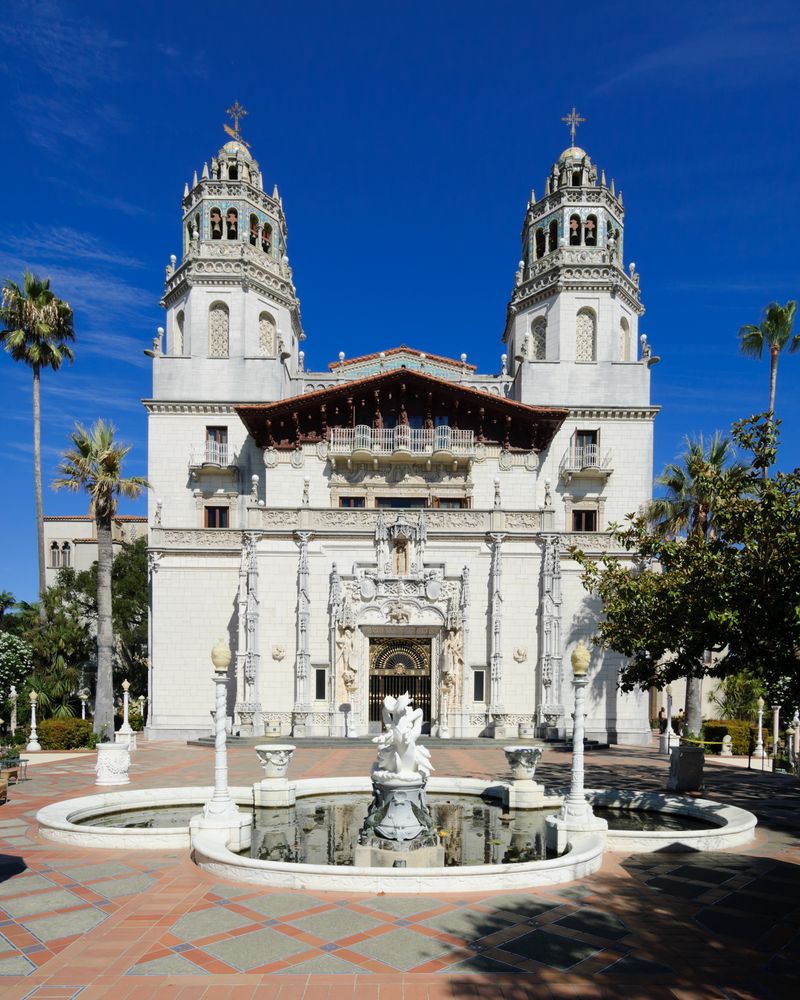
William Randolph Hearst’s final vision survived where earlier versions perished, creating a California landmark that perfectly captures one man’s unlimited architectural dreams.
This hilltop wonderland combines European art treasures with Hollywood glamour in ways that still seem almost impossible to believe. State ownership preserved what private ownership might have destroyed, allowing millions to experience the lifestyle of America’s most powerful media baron.
Each room tells stories of wealth, influence, and artistic passion that defined early 20th century American culture.
15. The Breakers, Rhode Island
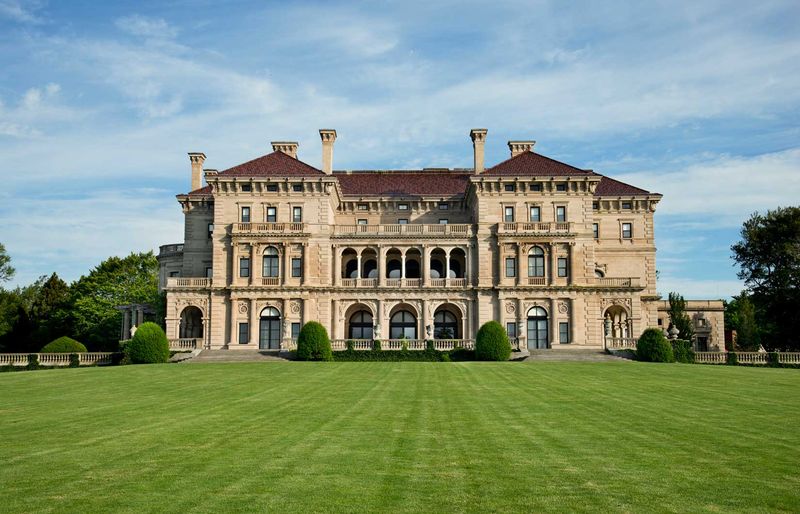
Cornelius Vanderbilt II’s Newport cottage redefined the meaning of summer home, creating 70 rooms of Italian Renaissance splendor that still overwhelms visitors with its sheer scale and luxury.
Every surface showcases the finest materials and craftsmanship that money could command. Preservation Society ownership rescued this palace from potential demolition, ensuring that future generations can experience authentic Gilded Age excess.
The Breakers proves that some architectural achievements are simply too magnificent to lose, regardless of changing times and tastes.
16. Lyndhurst Mansion, New York
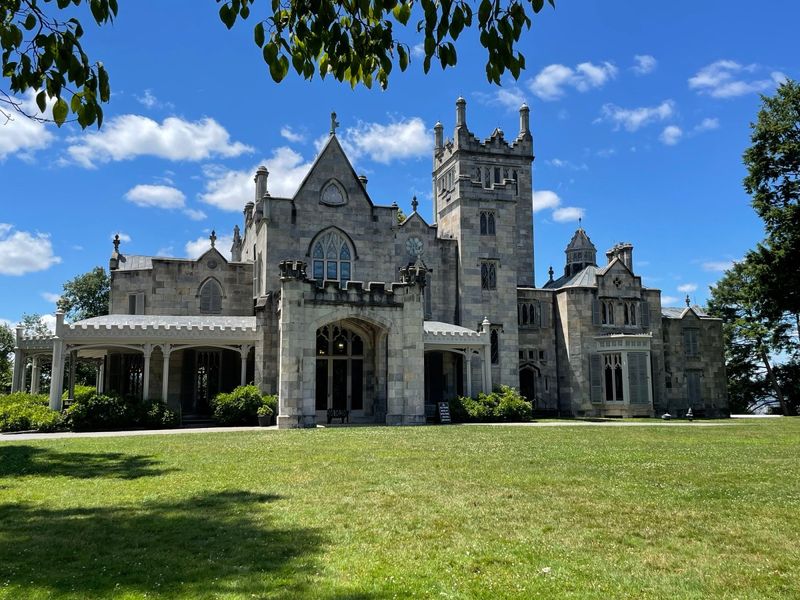
Though missing its original wing, Lyndhurst’s surviving Gothic Revival architecture still captures Alexander Jackson Davis’s romantic vision for American castle-living.
Its pointed arches and elaborate stonework create a fairy-tale atmosphere that transports visitors to medieval fantasies made real.
National Trust stewardship ensures that this Hudson Valley gem continues to inspire future generations with its unique blend of European Gothic traditions and American innovation. Each room demonstrates how 19th century Americans adapted Old World styles to New World ambitions.
17. The Olana Estate, New York
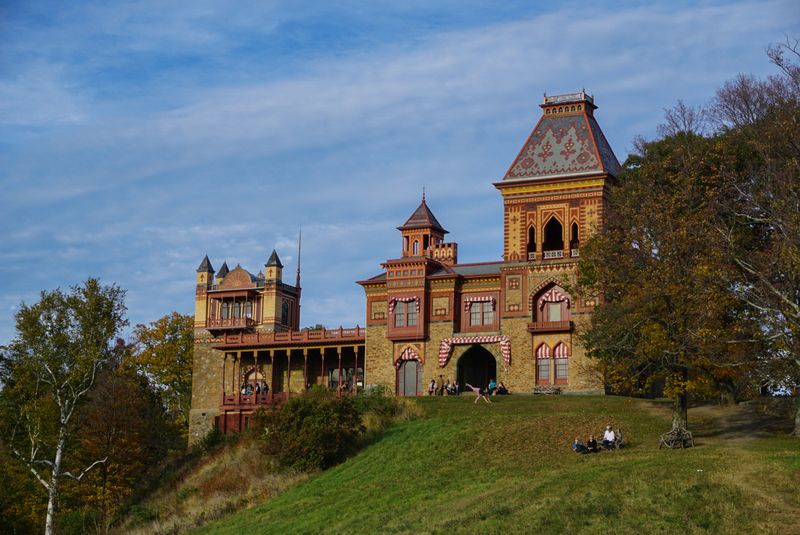
Frederic Edwin Church’s artistic vision created a home that’s part Persian palace, part Victorian mansion, and completely unique in American architecture.
This painter’s residence reflects his travels and artistic sensibilities in ways that blur the lines between house and artwork. State preservation maintains Church’s creative legacy, allowing visitors to experience how America’s greatest landscape painter translated his artistic vision into domestic architecture.
Olana proves that personal creativity can produce architectural masterpieces as lasting as any painting or sculpture.

